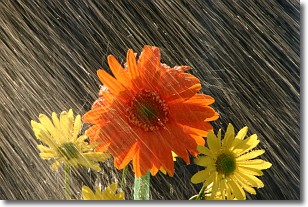Weather Alert in Montana
Flood Watch issued April 28 at 2:36AM MDT until April 28 at 6:00PM MDT by NWS Billings MT
AREAS AFFECTED: Northern Stillwater; Northern Park; Red Lodge Foothills; Paradise Valley; Livingston Area; Beartooth Foothills; Absaroka/Beartooth Mountains; Crazy Mountains; Southeastern Carbon; Northern Sweet Grass; Northern Carbon; Melville Foothills
DESCRIPTION: * WHAT...Flooding caused by rain and snowmelt continues to be possible, but the threat of higher end impacts has decreased. * WHERE...A portion of south central Montana, including the following areas, Absaroka/Beartooth Mountains, Beartooth Foothills, Crazy Mountains, Livingston Area, Melville Foothills, Northern Carbon, Northern Park, Northern Stillwater, Northern Sweet Grass, Paradise Valley, Red Lodge Foothills and Southeastern Carbon. * WHEN...Through this afternoon. * IMPACTS...Excessive runoff may result in flooding of streams and other low-lying and flood-prone locations close to the foothills. Some roads may become impassable. Any heavy rainfall over the American Fork or Robertson Draw burn areas could result in Flash Flooding and Debris Flows. * ADDITIONAL DETAILS... - Heavy rainfall fell just off the snowpack last afternoon and evening. Temperatures are beginning to cool over the higher terrain turning rain to snow over the higher foothills. This will limit the higher end impact potential that was previously anticipated. However, there remains the threat of at least minor flooding in the foothills due to heavy rain that fell earlier tonight combined with continued light to moderate rainfall that is forecast through this morning. Several stream gages are rising rapidly north of Red Lodge due to this runoff. A gauge near Fishtail reported around 3 inches of rain so far. - http://www.weather.gov/safety/flood
INSTRUCTION: You should monitor later forecasts and be alert for possible Flood Warnings. Those living in areas prone to flooding should be prepared to take action should flooding develop.
Want more detail? Get the Complete 7 Day and Night Detailed Forecast!
Current U.S. National Radar--Current
The Current National Weather Radar is shown below with a UTC Time (subtract 5 hours from UTC to get Eastern Time).

National Weather Forecast--Current
The Current National Weather Forecast and National Weather Map are shown below.

National Weather Forecast for Tomorrow
Tomorrow National Weather Forecast and Tomorrow National Weather Map are show below.

North America Water Vapor (Moisture)
This map shows recent moisture content over North America. Bright and colored areas show high moisture (ie, clouds); brown indicates very little moisture present; black indicates no moisture.

Weather Topic: What are Nimbostratus Clouds?
Home - Education - Cloud Types - Nimbostratus Clouds
 Next Topic: Precipitation
Next Topic: Precipitation
A nimbostratus cloud is similar to a stratus cloud in its formless,
smooth appearance. However, a nimbostratus cloud is darker than a stratus cloud,
because it is thicker.
Unlike a stratus cloud, a nimbostratus cloud typically brings with it the threat
of moderate to heavy precipitation. In some cases, the precipitation may evaporate
before reaching the ground, a phenomenon known as virga.
Next Topic: Precipitation
Weather Topic: What is Rain?
Home - Education - Precipitation - Rain
 Next Topic: Shelf Clouds
Next Topic: Shelf Clouds
Precipitation in the form of water droplets is called rain.
Rain generally has a tendency to fall with less intensity over a greater period
of time, and when rainfall is more severe it is usually less sustained.
Rain is the most common form of precipitation and happens with greater frequency
depending on the season and regional influences. Cities have been shown to have
an observable effect on rainfall, due to an effect called the urban heat island.
Compared to upwind, monthly rainfall between twenty and forty miles downwind of
cities is 30% greater.
Next Topic: Shelf Clouds
Current conditions powered by WeatherAPI.com




